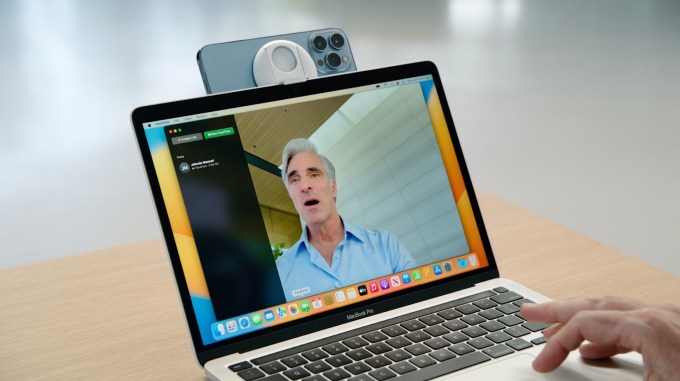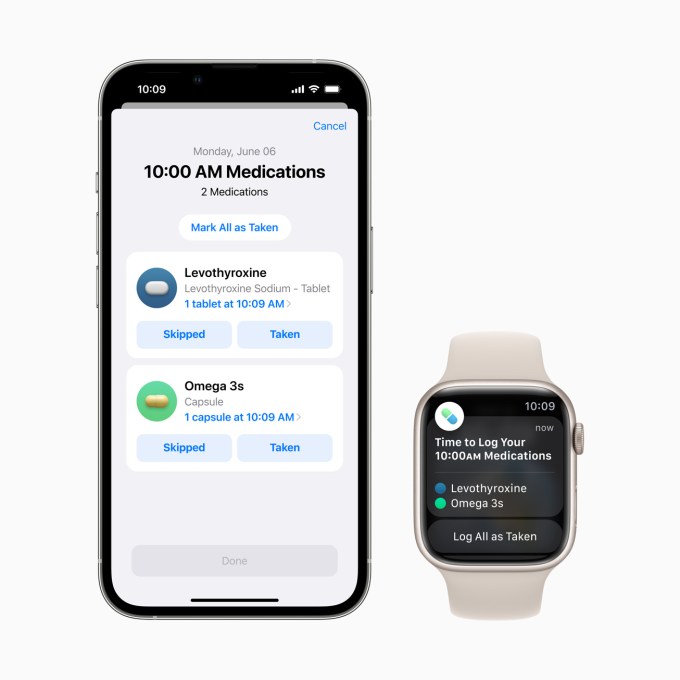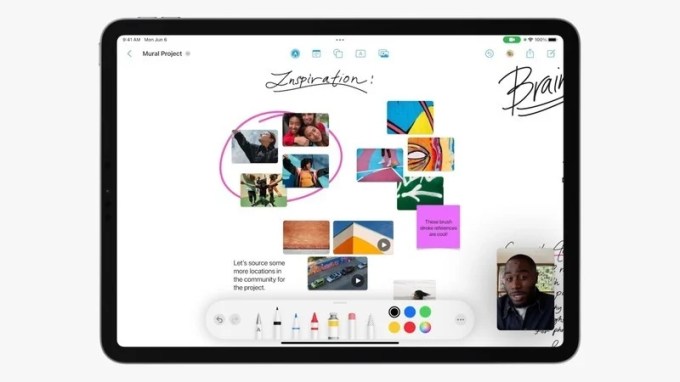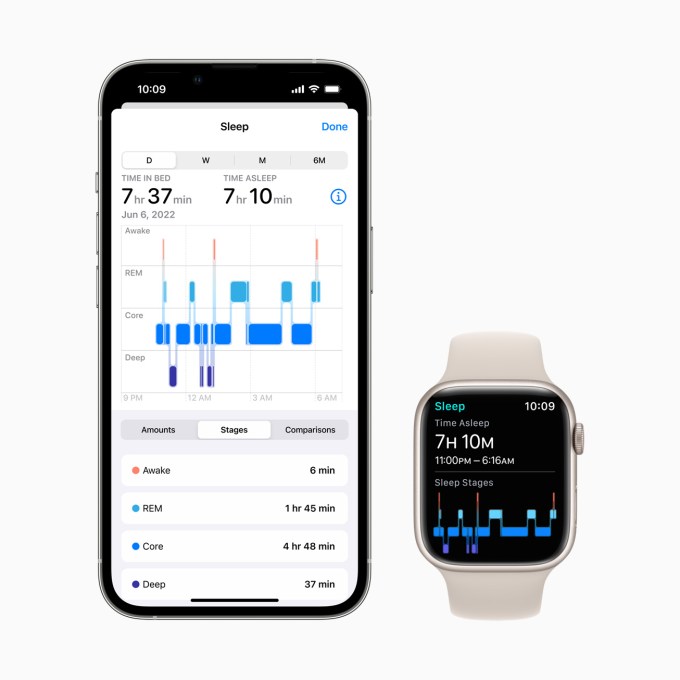Apple introduced some amazing updates across iOS, iPadOS, watchOS and macOS at the worldwide developer conference (WWDC) last week.
The company announced a few new features never seen before on iOS, like Stage Manager for better multitasking and Safety Check to get away from abusers. But there are others that Apple simply Sherlocked — the term for when Apple incorporates features that have been hallmarks of third-party apps, making those apps no longer necessary to use for those features. Many people on Twitter were surprised at how many apps got Sherlocked this year.
It’s hard to say if Apple engineers sat in a meeting room and got “inspired” by an app, or if a feature was already part of product roadmaps. Either way, it’s likely that a lot more people will use a system-baked feature than trying to find an app for a particular problem — unless the latter offers some unique extra features.
For the uninitiated, here’s the backstory of how “Sherlocked” became a popular word among Apple enthusiasts. The company released a finder app named Sherlock for macOS 8 in the late 90s. The tool had capabilities of searching the web and files on your local system.
Meanwhile, a company called Karelia Software had a finder app named Watson — priced at $29 — with some superior features like plug-ins for better internet search. In 2002, Apple released Sherlock 3 with similar features to Watson, making Karelia redundant and forcing it to close down eventually.
So the word Sherlocked came into the picture whenever Apple released a feature that could potentially shut down an app or make it useless.
Now that that’s out of the way, here’s a list of features and apps Apple Sherlocked.
Feature: Continuity camera
Sherlocked app: Camo
Apple’s new continuity feature will let you use your iPhone as a webcam, which was Camo’s main pitch. The iPhone-maker is partnering with Belkin to release a special mount later this year, which will hold your iPhone atop your MacBook screen. Plus, it will release an API for Camera Continuity so other apps could easily take advantage of this feature.

Image Credits: Apple (opens in a new window)
But Camo’s not completely dead. It’s available on Windows and is also compatible with Android phones. As Camera Continuity will only work with an iPhone-Mac combo, any other combinations of desktop and mobile systems will have to use Camo or an equivalent app. Plus, it could offer more video tuning features to its pro users, so they can get their money’s worth.
Feature: Apple Pay Later
Sherlocked apps: Klarna, Clearpay, many others
Reports earlier in the year suggested that Apple will launch a pay later service. The company went a step further and even opened a new lending subsidiary.
Apple Pay Later service will let you make purchases that you can pay in four equal installments spread over six weeks, but you don’t have to bear any interest or service fees.
Klarna offers a similar deal with its Buy Now Pay Later (BNPL) service. One way to compete with Apple might be to offer better terms to its customers. (It is also worth pointing out that Klarna and others offer a wider array of features and services both to consumers and businesses.)
Feature: Visual Lookup
Sherlocked apps: Remove.bg
Apple’s most fun feature coming out of WWDC lets you “pick up” an object from a photo or a video, and share it as an image. The final image is just of the object with the background removed — something the remove.bg service does really well. So if you have an iPhone, iOS 16 will remove any need for that.

Now you can make your pets into stickers with iOS 16. Image Credits: Apple
Feature: Medication tracking
Sherlocked apps: MyTherapy, Pillbox
Apple will make medication logging and reminders very easy with iOS 16. For U.S.-based users, the feature will also notify you about critical interaction of medicine — for instance, if it’s not advised to consume alcohol while taking a particular pill.

iOS 16 will help you with reminders so you don’t forget to take critical medications. Image Credits: Apple
Some medication tracking apps have nifty features like inventory tracking, but Apple can easily incorporate that in future rollouts.
Feature: Freeform
Sherlocked app: Figma’s FigJam, many others
Freeform is Apple’s new app for collaboration that lets you and your teammates work on a digital whiteboard together. You can add your own notes, include photos, draw out doodles and even FaceTime someone directly from the app. It’ll be available later this year on iOS 16, iPadOS 16 and macOS Ventura.

Image Credits: Apple
Apple’s announcement comes months after Figma released its own collaboration tool FigJam’s app on iPad in March. Other apps like GoodNotes and Explain Everything also have similar features.
Professional users might still stick to their existing solutions if Freeform won’t have easy migration tools to port projects from other apps.
Feature: Sleep tracking
Apple introduced sleep tracking with WatchOS 7 — and even if you don’t wear an Apple Watch, the Health app can monitor sleep based on bedtime mode schedule and your phone’s usage. All of this was pretty basic: Apple just gave you basic stats like average time in bed.
With iOS 16 and WatchOS 9, you’ll get better stats about your sleep, including the duration of different sleep stages like REM, Core or Deep sleep, and your heart rate during sleep.

New sleep tracking coming with iOS 16 and WatchOS 9. Image Credits: Apple
Until now, services like Oura and Whoop — both of which relied on additional hardware like a ring or wristband — provided detailed sleep analysis. So existing users might now be swayed by Apple’s announcement. But if someone’s in the market for a new wearable, exhaustive sleep tracking could be a crucial factor that could entice them to buy an Apple Watch.
In the past, there have been debates about if the company uses the App Store to copy ideas from notable apps versus if these new features are a natural evolution of Apple’s system.
Over the years, Apple hasn’t shied away from pointing out that its App Store supports many developers and jobs. But recent Antitrust discussions suggest many developers are unhappy about the company’s anti-competitive strategy of entering new verticals.
As Apple continues to introduce new features, apps and services, it will have to be careful about how it positions itself against existing players in the market to avoid scrutiny from antitrust watchdogs.





